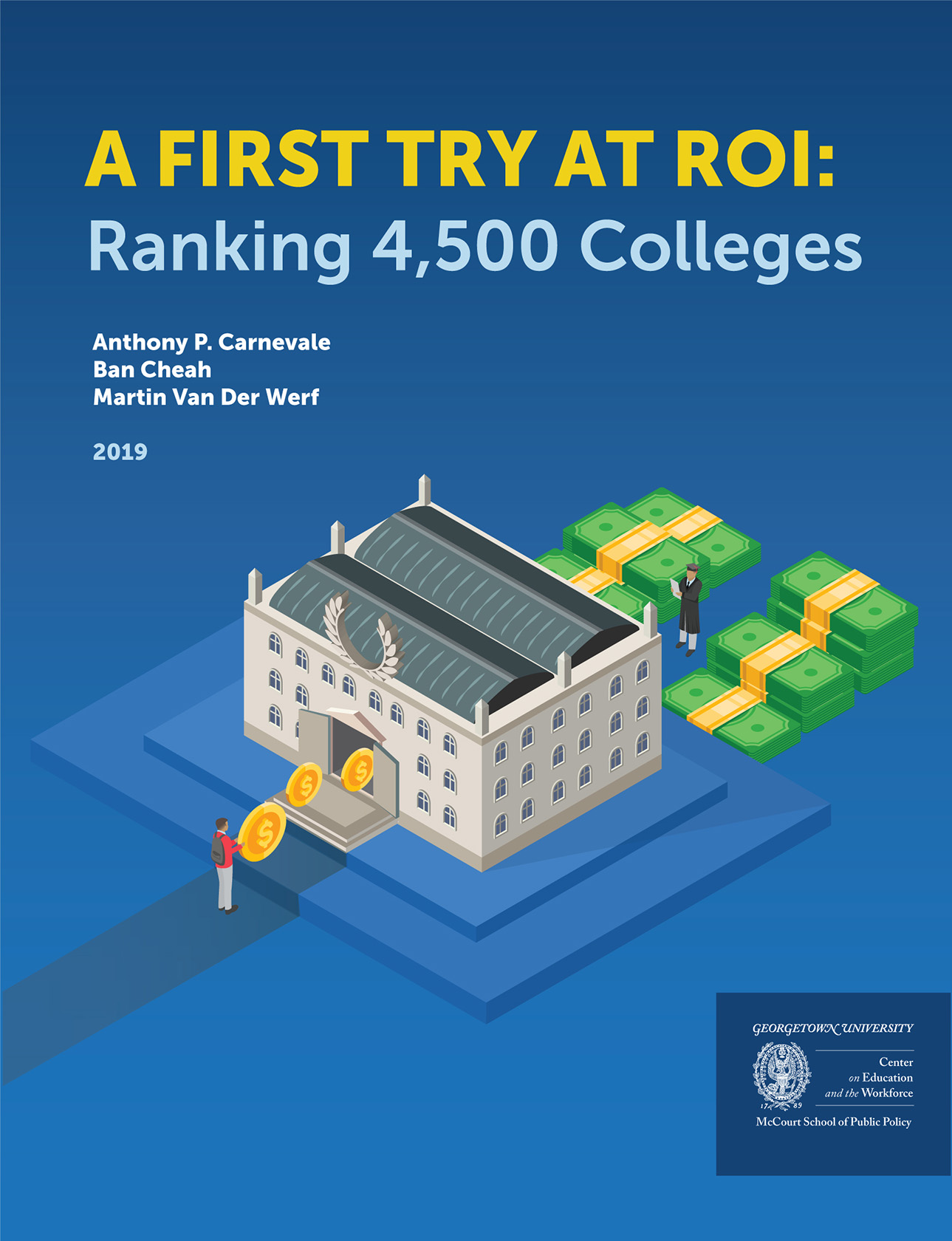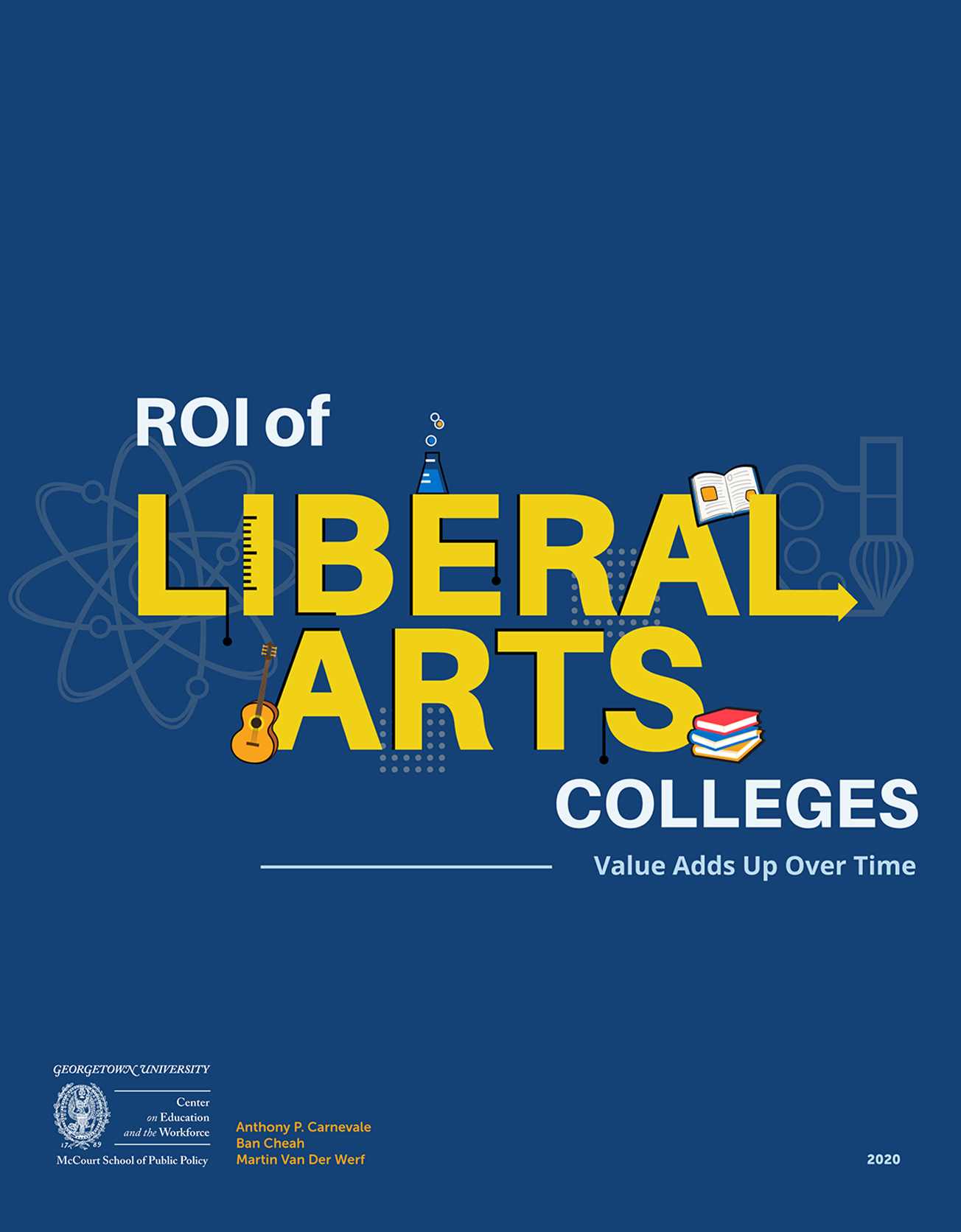Ranking ROI of 4,500 US Colleges and Universities
Summary
Using data from the expanded College Scorecard, this report ranks 4,500 colleges and universities by return on investment.
- A First Try at ROI: Ranking 4,500 Colleges finds that bachelor’s degrees from private colleges, on average, have higher ROI than degrees from public colleges 40 years after enrollment. Community colleges and many certificate programs have the highest returns in the short term, 10 years after enrollment, though returns from bachelor’s degrees eventually overtake those of most two-year credentials.
- ROI of Liberal Arts Colleges: Value Adds Up Over Time finds that the median ROI of liberal arts colleges is nearly $200,000 higher than the median for all colleges. Further, the 40-year median ROI of liberal arts institutions ($918,000) is close to those of four-year engineering and technology-related schools ($917,000), and four-year business and management schools ($913,000).
Find Your School
Visit the table below to see how your school stacks up to a range of metrics. Even though we rank the net present value for all colleges with available data, we exclude from these rankings an important benchmark: the alternative to not investing in postsecondary education.
Net Present Value (NPV)
The net present value is how much a sum of money in the future is valued today. This metric includes costs, future earnings, and the length of time it would take to invest and earn a certain amount of money over a fixed horizon.
NPV at 10, 15, 20, 30, 40 Years
While this report considers the NPV at a long-term (40 years) horizon to be the most comprehensive benchmark for judging value, some might have different goals that make short-term returns more ideal. This metric gives a net present value at different time horizons.
Net Price
This is the average cost of attendance, which includes tuition, fees, books and supplies, and living expenses, minus aid received from all sources.
Type & Level of Institution
Type designates whether an institution is a public, private nonprofit, or private for-profit institution. Level designates whether an institution is less than 2-year, a 2-year, or a 4-year institution.
Earnings-Price Return
A ratio that expresses how much earnings 10 years after enrollment are above or below the net price (in percent)—sometimes used to measure return. This measure is included for comparison to show that it does not fully account for return that has a time horizon.
Earnings-Debt Return
A ratio that expresses how much earnings 10 years after enrollment is above or below the median total debt (in percent)—sometimes used to measure return. This measure is included for comparison to show that it does not fully account for return that has a time horizon.
7-Year Repayment Rate
The share of borrowers who have repaid at least one dollar of the principal on their student loans since entering into repayment. A high rate indicates that earnings are sufficient to cover debt payments.
Graduation Rate
The rate at which full-time, first-time students complete their credentials within 150 percent of the expected time (e.g., the percentage of students who earn a bachelor’s degree within six years).
Additional Institutional Filters
The table filters by men or women only institutions, minority serving institutions, and Carnegie Classification, which classifies colleges by their common attributes, such as the most prevalent degree, whether they offer graduate degrees, and the level of research activity that takes place there.
ROI of institutions are calculated using data on the average net price and salary/earnings from the US Department of Education’s College Scorecard. An institution will not be listed in the table below if either of these are missing. The earnings data from the College Scorecard includes only students who received federal financial aid at the time of enrollment.
Resources
A First Try at ROI: Ranking 4,500 Colleges finds that bachelor’s degrees from private colleges, on average, have higher ROI than degrees from public colleges 40 years after enrollment. Community colleges and many certificate programs have the highest returns in the short term, 10 years after enrollment, though returns from bachelor’s degrees eventually overtake those of most two-year credentials.
Resources
ROI of Liberal Arts Colleges: Value Adds Up Over Time finds that the median ROI of liberal arts colleges is nearly $200,000 higher than the median for all colleges. Further, the 40-year median ROI of liberal arts institutions ($918,000) is close to those of four-year engineering and technology-related schools ($917,000), and four-year business and management schools ($913,000).


